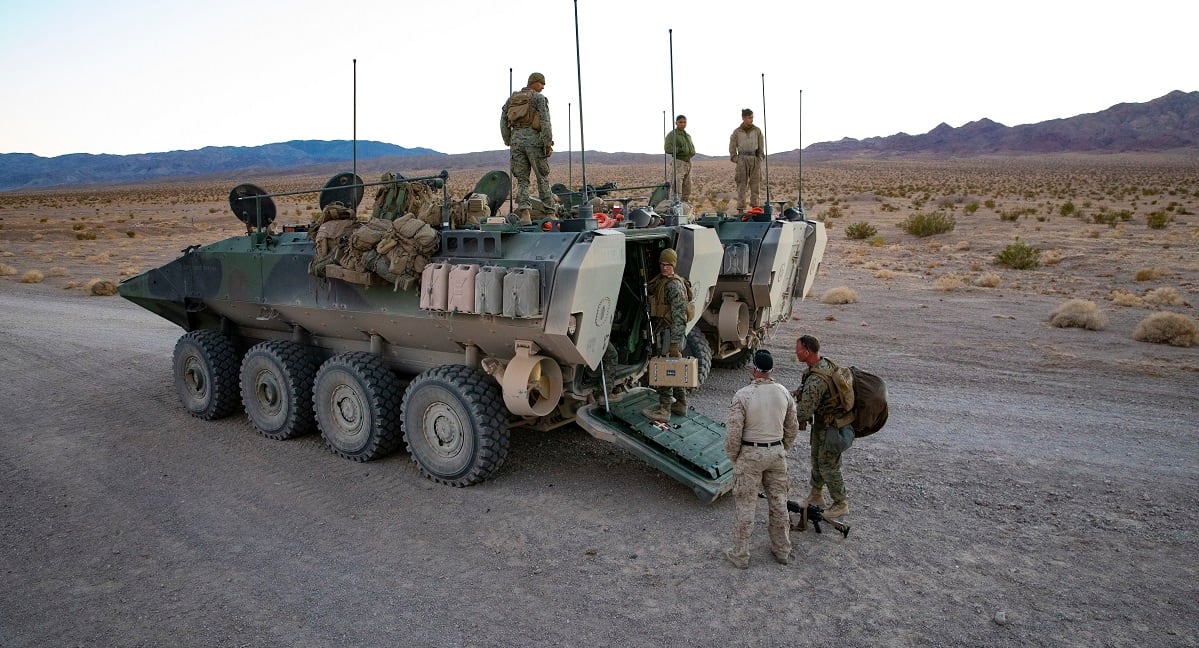The Marine Corps’ top officer said Tuesday the service is working through “a few notable challenges” in fielding its amphibious combat vehicle, including several mechanical issues and a training deficiency that he said led to last year’s string of mishaps.
The two main mechanical issues with the ACV both involve parts related to the vehicle’s wheels, “one with the struts / shock absorbers and the other with the central tire inflation system,” Marine Commandant Gen. David Berger said in written testimony submitted to the Senate Appropriations Committee.
The shock absorber is part of the vehicle’s strut system, according to Garrett Lacaillade, vice president of amphibious programs at BAE Systems, which manufactures the vehicle.
Central tire inflation systems allow vehicle operators to adjust pressure levels in the tires as the vehicle crosses different terrain, Lacaillade said.
“Both issues have caused part failures, resulting in a decrease in reliability and a corresponding decrease in readiness,” Berger said.
The ACV can travel both on water and on land — via wheels, unlike its tracked predecessor, the amphibious assault vehicle.
Berger also noted “issues related to possible water incursion into the power train,” the system of internal components that includes the engine.
The Marine Corps is working with BAE Systems to resolve these issues, Berger said.
“As we continue fielding ACVs, a modern, highly-survivable amphibious capability to the Fleet Marine Forces, the readiness and safety of Marines are always our top priority,” Lacaillade said in a statement Wednesday to Marine Corps Times. “We will continue partnering closely with the U.S. Marine Corps to deliver the safest, most capable platform for our Nation’s Marines.”
Lacaillade referred Marine Corps Times to the Marine Corps for more information from a safety report on the mechanical issues. Marine Corps Times is in the process of requesting the report, which was unavailable as of publication.
In 2022, the Marine Corps placed temporary restrictions on operating amphibious combat vehicles in the surf after training mishaps in July and October.
The July mishap, in which one vehicle flipped over and another became disabled, occurred during unusually high wave conditions that resulted from a storm in the southern hemisphere, the San Diego Union-Tribune reported. No Marines were injured in the incidents.
“According to BAE Systems and confirmed by our safety investigations, these rollovers were caused by a lever effect generated when the vehicle becomes parallel to the surf-line and is struck by a large wave,” Berger stated Tuesday.
“These events were, in large part, the product of training shortfalls,” the commandant added.
In January, the Marine Corps fired the commander of the Assault Amphibian School, which trains Marines to operate amphibious vehicles, following information that emerged during an investigation into the October mishap.
Capt. Phil Parker, Training Command spokesperson, told Marine Corps Times at the time that the relief of the commander, Col. John Medeiros Jr., wasn’t a result of misconduct or criminal negligence.
Berger added in his testimony Tuesday that the Corps is working to improve its training for Marines operating the ACV, which he noted was “new and more sophisticated.”
Berger’s explanation for the rollovers echoes what the Marine Corps amphibious combat vehicle program manager told Marine Corps Times in September: there is a learning curve in adjusting from the amphibious assault vehicle to the amphibious combat vehicle.
RELATED

“Marines need to learn how this vehicle operates. It’s not better or worse than the AAV; it’s just different than the AAV,” Mike Olree told Marine Corps Times. “Anytime it doesn’t operate like an AAV, they seem to think something’s wrong, right? That’s not necessarily the case.”
Lt. Gen. Karsten Heckl, the deputy commandant for combat development and integration, told legislators on the Senate Armed Services Committee on Tuesday that part of the troubles with the amphibious combat vehicle had to do with how Marines have traditionally assessed the surf zone.
“We did it very inaccurately,” he said.
Now, he said, the Marine Corps is fielding autonomous drones to collect more accurate data on surf conditions.
“The vehicle’s gonna be great,” Heckl said. “We just gotta work out these problems and make sure when we make a decision to go or no-go through a surf zone, whether coming ashore or going back to the ship, that we have the right and accurate information to make that judgment.”
Irene Loewenson is a staff reporter for Marine Corps Times. She joined Military Times as an editorial fellow in August 2022. She is a graduate of Williams College, where she was the editor-in-chief of the student newspaper.




